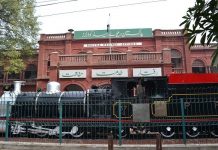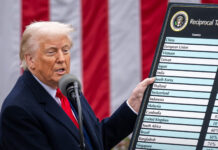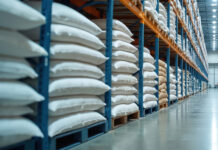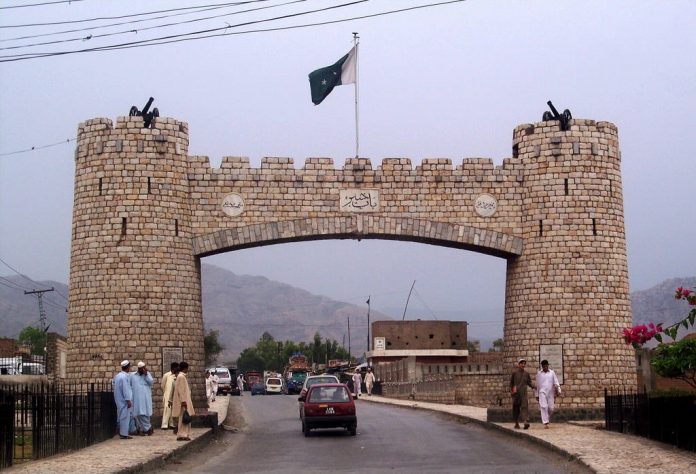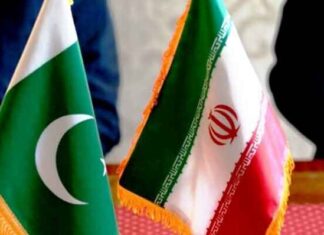PESHAWAR, June 13:The Khyber Pakhtunkhwa government on Friday presented a Rs2.18 trillion tax-free budget for the fiscal year 2025–26, featuring record development spending, major hikes in salaries and pensions, and strong resistance to federal taxation in merged areas.
Presented by Minister for Law and Parliamentary Affairs Aftab Alam Khan — holding additional charge of the finance portfolio — the budget proposes Rs547 billion under the Annual Development Program (ADP), a 31% increase from last year’s Rs416.3 billion. Speaker Babar Saleem Swati presided over the special assembly session, which was also attended by Chief Minister Ali Amin Gandapur.
Gandapur lashed out at the federal government for what he termed “unjust taxation” in the merged tribal areas, declaring that his government will not accept the imposition of federal taxes on former FATA and PATA.
Federal transfers, revenue targets and fiscal surplus
The province expects to receive Rs1,506.9 billion in federal transfers, up 24% from Rs1,212 billion last year. Provincial own-source revenue is projected at Rs129 billion, up 38% from Rs93.5 billion. However, non-tax revenue is expected to drop 68%, falling to Rs10 billion from Rs31.6 billion.
Grants for merged districts are estimated at Rs292.3 billion, reflecting a 12% increase from last year’s Rs259.9 billion.
Total estimated expenditures for the upcoming fiscal year stand at Rs1,962 billion, compared to Rs1,654 billion in FY2024–25 — marking a 19% increase. The province anticipates a budget surplus of Rs157 billion.
Salaries, pensions and tax relief
The budget proposes a 10% increase in salaries and a 7% raise in pensions for government employees. The minimum wage is set at Rs36,000 per month. A disparity allowance hike from 15% to 20% has been proposed for those not receiving executive allowances.
The government has also introduced relief on property and vehicle-related taxes: stamp duty on residential and commercial property has been slashed from 2% to 1%, hotel bed tax reduced from 10% to 7%, and registration fee plus token tax on electric vehicles has been completely abolished.
Rs680 billion has been earmarked for salaries and Rs200 billion for pensions, with Rs189.6 billion going to settled districts and Rs4.4 billion to the merged districts.
Federal dues and pending payments
Despite ambitious spending, the KP government faces a Rs267 billion shortfall under the National Finance Commission (NFC) award. Additionally, Rs71 billion in Net Hydel Profit and Rs58 billion in oil and gas royalties remain outstanding from the federal government.
ADP 2025–26: A record Rs547bn development push
The KP government has earmarked Rs547 billion for development projects in FY2025–26 — the highest in provincial history. Of this, Rs195 billion is designated for settled districts and Rs294 billion for merged districts, which also covers current expenditures.
A total of 2,152 schemes — 1,342 ongoing and 810 new — are included in the ADP.
Key allocations include:
- Roads & Infrastructure: Rs53.6 billion for 583 projects
- Health: Rs27.2 billion for 182 projects
- Education (Elementary & Secondary): Rs13.5 billion for 96 schemes
- Water Supply & Sanitation: Rs10.8 billion for 74 schemes
- Energy & Power: Rs4.8 billion for 59 projects
- Higher Education: Rs6.27 billion for 63 projects
- Tourism: Rs4.46 billion for 60 projects
- Sports: Rs8.88 billion for 51 schemes
- Forestry: Rs4.24 billion for 62 schemes
- Law & Justice: Rs6.46 billion for 42 schemes
- Social Welfare: Rs1.78 billion for 32 schemes
- Urban Development: Rs9.34 billion for 44 projects
- Relief & Rehabilitation: Rs3.2 billion for 26 projects
- Multi-sectoral schemes: Rs54.27 billion for 131 initiatives
Flagship infrastructure projects include the Peshawar Ring Road (southern section), Dera–Peshawar Motorway, and the Peshawar Valley Housing Scheme Expressway.
Rs165bn to be spent on subsidies in FY2025–26
The budget includes Rs165 billion in subsidies, a significant jump from last year’s Rs134 billion. Rs36 billion has been set aside for the Sehat Card (health insurance), while the BRT project will receive Rs4 billion — up by Rs1 billion. An additional Rs5 billion has been allocated for new buses.
Subsidies on wheat have surpassed Rs27 billion, while Rs65 billion has been earmarked for MTI hospitals. Public sector universities are expected to receive Rs6 billion in subsidies.
Sectoral snapshot: Education, police, LG, livestock
In a major push for education, Rs50 billion has been allocated for higher education, up from Rs36 billion. University funding will rise from Rs3 billion to Rs10 billion. Rs3.5 billion has been set aside for five new colleges, and Rs2.7 billion for converting existing colleges into applied science and technology centres. The scholarship endowment fund has been increased by Rs1.22 billion.
The police department receives Rs158 billion — a 27% jump from last year’s Rs124 billion — including Rs13 billion for equipment and vehicle procurement. The Safe City Command and Control Centre will be expanded to three more districts.
The Local Government Department gets Rs55.39 billion. Of this, Rs6.15 billion will be spent in northern districts, Rs3.3 billion in southern KP, Rs5.3 billion in central areas, and Rs2.95 billion in merged districts. Rs2 billion is allocated for public parks and Rs800 million for slaughterhouses in key districts.
The livestock sector has been allocated Rs17 billion. This includes Rs500 million for horse breeding in four districts, Rs1 billion for cattle productivity, and Rs1 billion for veterinary centers in the merged areas. Rs300 million will support poverty alleviation in former tribal districts.
Conclusion: Bold spending amid fiscal constraints
With record development funding, major salary increases, and strategic allocations across core sectors, the KP government’s 2025–26 budget lays out an ambitious roadmap. But looming federal dues and a projected revenue shortfall mean the success of this budget will hinge on timely transfers and prudent execution.



